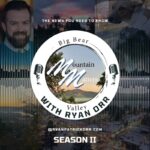 Big Bear City, CA, September 29, 2014 – With mountain highways running along forested areas, wildlife can sometimes be found crossing the road. Drivers are sometimes taken by surprise, and there have been several collisions this year between motorists and bear or deer on routes 18, 330 and 38.
Big Bear City, CA, September 29, 2014 – With mountain highways running along forested areas, wildlife can sometimes be found crossing the road. Drivers are sometimes taken by surprise, and there have been several collisions this year between motorists and bear or deer on routes 18, 330 and 38.
State Farm says such crashes could increase. Their latest report states that U.S. drivers are nearly 3% more likely to collide with a deer in the next 12 months than they were last year. New statistics show that the odds of a driver hitting a deer in the coming year are 1 in 169, but that likelihood more than doubles during October, November and December.
Even though California is not in the top 10 states for deer collisions, in mountain areas like Big Bear (and even in hilly areas of Los Angeles) the risk almost an everyday reality. The collisions can not only fatally injure animals, they’re traumatic and costly for drivers, with insurance claims averaging nearly $4,000. In addition, 175 human deaths in 2012 were attributed to collisions with animals, according to the Insurance Institute for Highway Safety.
Here are some safety tips:
-
At night, when there is no oncoming traffic, use high beams to to illuminate the areas from which deer will enter roadways.
-
Keep in mind that deer movement is most prevalent in the fall; dusk and dawn are especially high-risk times.
-
Remember deer generally travel in herds, so if you see one, others are probably nearby.
- Don’t swerve! If a deer collision seems inevitable, trying to swerve out of the way could cause you to lose control of your vehicle or place you in the path of an oncoming vehicle.



